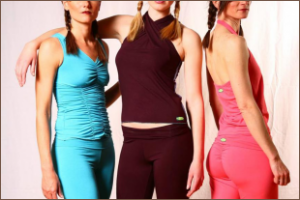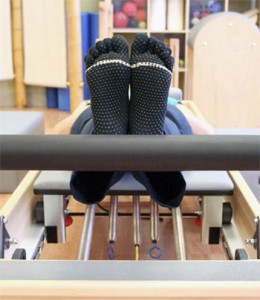Your First Pilates Class: What to Wear, Bring and Expect
Pilates can be a mysterious pursuit. It often takes place in a private one-on-one format on machines that look like medieval torture devices and have esoteric names like the Reformer. New students who are eager to start working towards the benefits of pilates may feel uncertain of what to expect. Following are a few easy tips to ease beginners into your first class.
What to wear
Wear clothing that is comfortable and allows you to move freely. Too much bulk will get in the way and possibly get caught in the springs of the machines. Clothes that are too tight will restrict movement and might make you self-conscious when you see how others in the studio are dressed. Reasonably fitted clothing is best to allow you to see your form when you need to and it will stay in place better once you start moving. Women may wear yoga pants and a t-shirt or tank top. Men may wear t-shirts and wear long workout pants. Men and women both may be asked to wear socks, depending on the studio.

For the comfort of everyone in the studio, please do not wear heavily scented lotions or other products. People’s reactions to scent vary wildly, from very mild to very serious. You do not want your perfume, hairspray or hand cream to trigger someone’s headache, allergic reaction or even migraine.
It’s also a good idea to avoid large jewelry. Necklaces may press uncomfortably on your throat when you’re lying down and big earrings may get in the way when you are in side-lying positions or resting your head between the shoulder rests on the Reformer. Big rings may get in the way when you are doing arm work with the straps, pole or ropes in your hands.
A special note for men: keep in mind that in pilates you may spend time in with your legs in the air or in fully inverted (upside-down) positions. If you come to pilates in your regular running shorts, they will slide down when you lift your legs and show whatever’s underneath. If you must wear running shorts, please wear bike shorts underneath.
A couple of years ago I actually had this awkward situation come up in the studio. One gentleman came twice a week to his workouts wearing loose running shorts. Other clients in the studio who were working out on the machines around him, were not able to escape the view. They complained to studio management who had to eventually tell the gentleman to wear long pants. Don’t be that guy. (He was actually quite lovely and devoted to his pilates workouts, just unaware that his attire was effecting the environment of others.)
What to Bring
You have booked your session, you have chosen a package that works for your goals and schedule. Now you are ready to head out to your lesson. All you need is your pilates top and bottom as described above. You’ll also need clean socks as many studios require that you wear them since you won’t be wearing shoes.

You may bring a bottle of water although some studios will have water available. Many studios allow only water on the floor in case there are any spills. You won’t need a watch as there is usually a clock hung prominently in the studio to help instructors stay on schedule. Your studio will have all the machines, small props and mats you’ll need.
What to Expect
At the beginning of your session your instructor will introduce themselves. They will ask if you have any special conditions, injuries or issues that may effect your session. For the sake of your safety and success, please be truthful. Your instructor needs to know whether they need to avoid or emphasize certain aspects of your workout. If you have many issues, you may want to prepare a list beforehand. You don’t have to write it down, just make sure to hit any major concerns you have.

Don’t let embarrassment keep you from sharing important information. Your instructor is a professional body worker and has probably heard it all. We don’t need to know about your personal life, just the things that effect the way your body moves. That includes medication, injuries, illness, recent pregnancies, surgeries or acccidents.
Some of the issues clients have brought to my attention include painful breast-cancer scar tissue, neck or back pain, rotator cuff injuries, knee replacements and bladder issues which require frequent bathroom breaks throughout the workout. Whatever it is, most likely we can accommodate it and still get you a great workout.
Let me emphasize again that we need to know what we are working with before you start the workout. I’ve been halfway through a session when a client will say, “oh yeah, my doctor said I should not do that because of my blood clot” or “that hurts the rib I cracked this weekend.” Inform us before before we start your session so we can be aligned with your doctor’s recommendations and don’t do anything to exacerbate the injury.
If you and your instructor are a good match, you will likely have an on-going relationship. As with all relationships, start off with a comfortable level of trust for your mutual benefit.